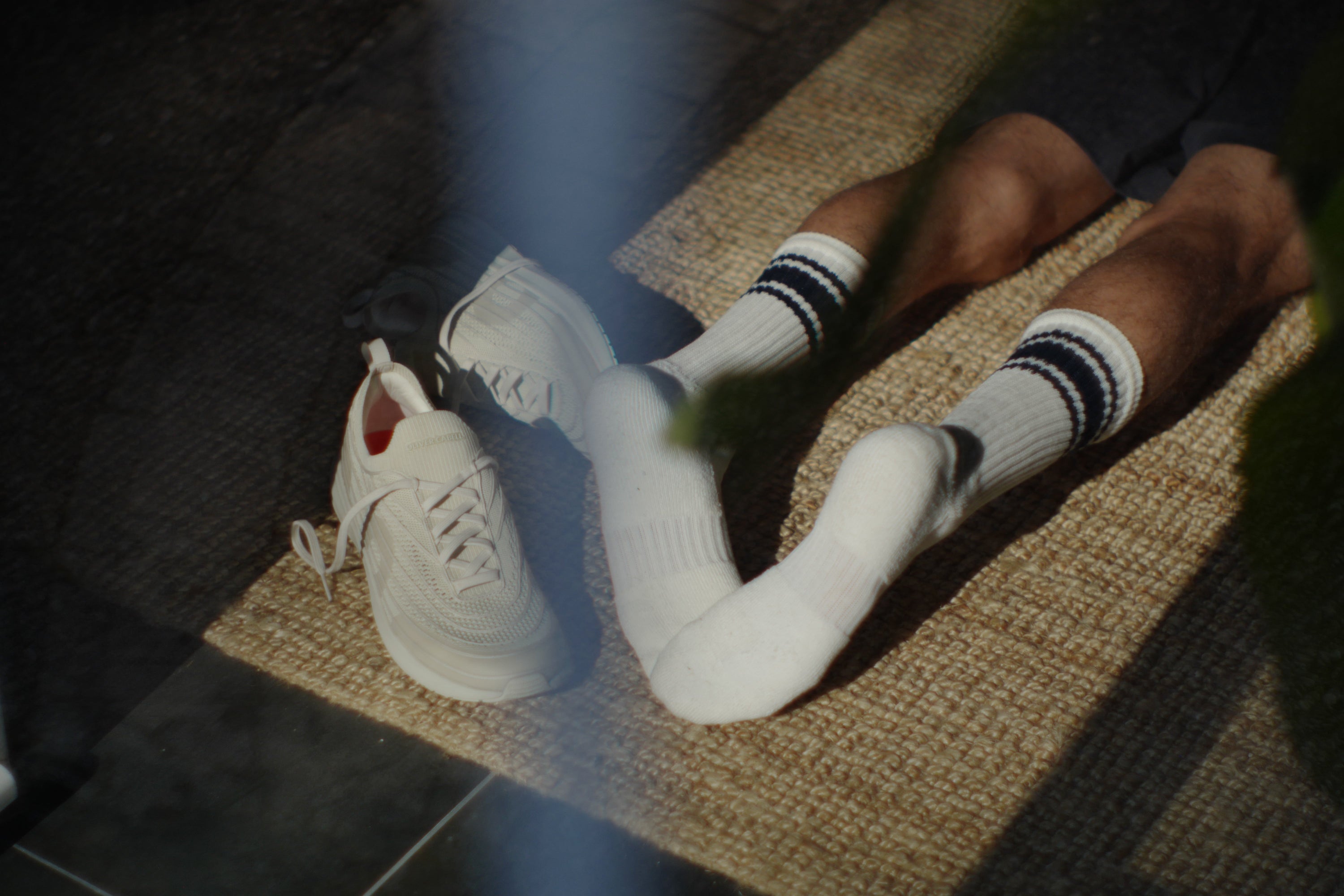
Pronation and supination are the natural motions of your foot rolling inward and outward, respectively, as you walk or run. These movements play a significant role in how your weight is distributed, potentially affecting everything from your gait to your risk of injury. Recognizing whether you lean more toward pronation or supination can also help guide your choices in footwear and training.
What's the Difference Between Pronation and Supination?
Pronation is the inward rolling motion of your foot as it strikes the ground. Imagine your foot acting like a shock absorber, naturally collapsing inward to distribute impact and help you adapt to different surfaces. During normal pronation, your arch slightly flattens, allowing your foot to effectively absorb and disperse the shock of each step.
Supination, in contrast, is the outward rolling motion of your foot. Picture your foot maintaining a more rigid arch, transferring weight along the outer edge during movement. While some supination is normal, excessive supination can create increased stress on your ankle and lower leg muscles.
Key differences at a glance:
| Characteristic | Pronation | Supination |
|---|---|---|
| Foot Movement | Inward roll | Outward roll |
| Arch Behavior | Flattens slightly | Remains elevated |
| Impact Distribution | Broader, more shock-absorbed | Concentrated on outer foot |
How to Identify if You Overpronate or Oversupinate
Detecting your foot's movement pattern doesn't require a medical degree—just some simple observations and tests. Here are practical ways to understand your foot mechanics:
-
The Wet Test:
- Wet the bottom of your foot.
- Step on a flat, dark surface.
- Examine your footprint:
- Flat, wide print = Overpronation
- Narrow, curved print = Oversupination
- Moderate curve = Neutral pronation
Additional physical signs to watch:
Overpronation Indicators:
- Worn shoe inner edges
- Ankles that seem to roll inward
- Flat or low arches
- Frequent inner knee or shin pain
Oversupination Indicators:
- Worn outer shoe edges
- Rigid, high arches
- Reduced shock absorption
- Recurring lateral ankle sprains
Choosing the Right Shoes for Pronators and Supinators
Your shoes are more than fashion statements—they're critical support systems for your unique foot mechanics. The right footwear can prevent injuries and improve overall performance. For those dealing with plantar fasciitis, selecting the right shoes is especially important to avoid exacerbating the condition.
For Overpronators:
- Look for "stability" or "motion control" shoes.
- Seek firm medial (inner) support.
- Choose shoes with structured heel counters.
- Opt for straighter shoe lasts.
For Supinators:
- Prioritize shoes with cushioning.
- Select neutral shoes with flexible midsoles.
- Look for curved or semi-curved shoe lasts.
- Focus on shock absorption technologies.
Pro tip: Replace running shoes every 300-500 miles to maintain optimal support and prevent potential mechanical compensation that could lead to injuries. Additionally, consider incorporating orthopedic insoles or supination insoles to provide extra support and alignment.
Final Thoughts
Understanding pronation and supination is more than just technical foot mechanics—it's about recognizing the foundation of your body's movement. Every step tells a story of balance, strength, and resilience. Whether you're an elite athlete or someone who enjoys occasional weekend workouts, your foot's natural movement pattern plays a crucial role in overall performance and well-being.
The journey to understanding your feet is deeply personal. It's not about achieving perfection, but about finding the right support that allows you to move confidently and comfortably. By paying attention to your unique foot mechanics, you're taking a proactive approach to preventing injuries and maintaining long-term athletic health. Remember, your feet are the unsung heroes of every movement—they deserve thoughtful care and support that matches their incredible complexity.
Ultimately, knowledge is the first step towards better movement. Listening to your body, understanding its natural rhythms, and supporting its unique mechanics can transform how you approach physical activity, recovery, and overall athletic performance.
At Oliver Cabell, we understand the challenges athletes face with maintaining optimal foot health, which is why we've dedicated ourselves to designing orthopedic shoes that support every step. We believe that informed choices and the right footwear can enhance your comfort and performance, complementing the insights shared in this article. Our approach is rooted in providing thoughtful, supportive solutions that work in harmony with your body’s unique movement patterns.
Shop Supination Shoes
Check out our line of supination shoes and overpronation shoes. Find a pair that helps you find your footing and aid in symptom management.